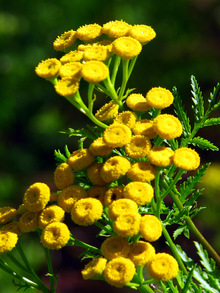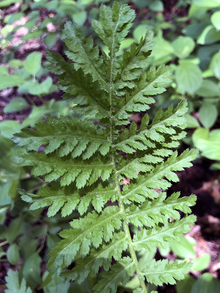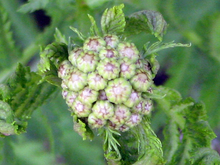Quick facts
Common tansy is an invasive species. Common tansy is on the Control noxious weed list meaning you must prevent the spread of this plant.
-
Common tansy is found along roadsides, in gardens and in abandoned farm yards.
-
South sloping areas are most vulnerable.
-
Forms dense stands that can reduce desirable forage and pasture capacity, degrade wildlife habitat and interfere with reforestation and landscape restoration efforts.
-
May be toxic to livestock if consumed.
Common tansy should be reported. The Minnesota Department of Natural Resources provides detailed recommendations for reporting invasive species.
How to identify common tansy
- Common tansy (Tanacetum vulgare) is a perennial herbaceous plant with multiple three to six feet tall, vertical stems giving it a shrub-like appearance.
- Emits a strong odor when crushed.
Stem
- A single almost woody, slightly hairy to smooth stem that’s purplish-red at the base.
- The stems have alternate branches that extend toward the top.
Leaves
- Fern-like appearance with alternate, pinnately divided, toothed edges; two to twelve inches long.
- Leaves become smaller toward the top of the stalk and are strongly aromatic when crushed.
Flowers
- Bright yellow daisy-like discs up to 1/2" wide, lacking rays; blooms from July through October.
- Resembles a yellow button.
- Develops into a dense flat-topped cluster at plant apex.
Seeds
- Small, yellowish-brown, dry, five-toothed crowned seeds.
- The seeds are tufted and easily dispersed. They are dispersed by wind and water.
- Each plant is able to produce over 50,000 seeds per year.
Roots
- Very fibrous and difficult to remove.
- Root segments easily resprout.
Reviewed in 2019




